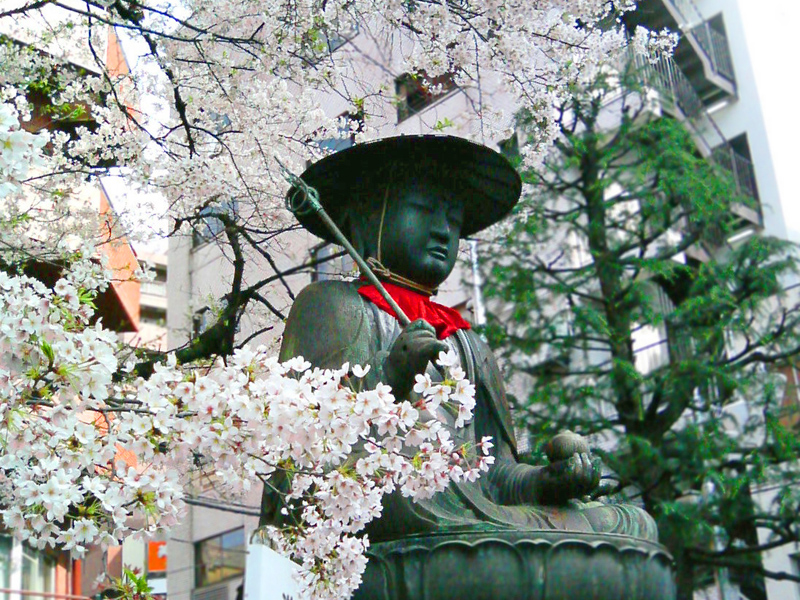
The Story of Kasajizo
One of Japan’s many enchanting folktales is the story of Kasajizo (kasa: straw hat; jizo/jizou: bodhisattva), which goes like this.
Once upon a time in a tiny village in Japan, there was a poor old couple who wove sedge hats for a living. One cold winter day close to the New Year, the old woman noticed that they had very little rice left to last them until the New Year’s celebration.
To add to the couple’s dismay, the snow was so deep they could not venture out to gather leaves to weave hats to sell so they could buy food. With nothing else to do, the old woman cooked what was left of the rice for their supper.
As the old couple sat down to eat, from a tiny hole in the wall a baby mouse appeared exclaiming, “Oh, I am so hungry.” The parents of the baby mouse explained that the old couple was so poor there were hardly any scraps left to eat. The old man, seeing the family of mice, took pity on them and shared with the mice the last of their rice as they all dined together.
The next morning, the old couple yet again shared some pickles and tea with the mice for breakfast. The mice were so grateful they gathered sedge from the forest and brought it back to the old couple so they could make hats. As the old man made his way to town to sell his wares, he passed by the stone statues of Jizo-sama. He noticed that their heads were covered with snow so he gently wiped it away.
When the old man reached town, all the people were busy preparing for the coming New Year. He called out, “sedge hats, sedge hats!” But no one paid any attention to him. As evening approached, the old man had not sold a single hat.
He shouldered his wares and made his way home. Along the way he again passed the Jizo-sama statues and saw that their heads were covered with snow. He had nothing left to offer but the unsold hats. He wiped off the snow on each head and placed a hat on each statue. There were six statues in all but the old man had only five hats so he placed his towel on the head of the sixth statue instead. After making his offering, the old man continued on his way home.
When the old man got home, he explained to his wife and the mice what he had done. They all agreed that the old man had done a kind deed. The old woman quietly prepared hot water and pickles to welcome the New Year. A short while later, they all heard loud voices calling out, “New Year’s Delivery for the old hat seller!” The old couple and the mice were all surprised to see the Jizo-sama statues with a sleigh loaded with miso, rice, and much more. The Jizo-sima statues gave all this food in thanks for the kindness the old man had shown them. The old couple thanked the statues and prepared a hearty New Year’s feast for themselves and their animal friends.
Watch the story:
